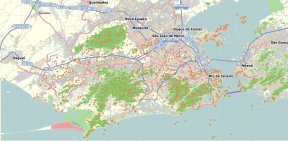
The Rio de Janeiro Metro, commonly referred to as just the Metrô is a rapid transit network that serves the city of Rio de Janeiro, Brazil. The Metrô was inaugurated on 5 March 1979, and consisted of five stations operating on a single line. The system currently covers a total of 58 kilometres (36 mi), serving 41 stations, divided into three lines: Line 1 ; Line 2, which together travel over a shared stretch of line that covers 10 stations of an approximate distance of 5 kilometres (3.1 mi); and Line 4. Metrô Rio has the second highest passenger volume of the metro systems in Brazil, after the São Paulo Metro.

The Estrada de Ferro Central do Brasil was one of the principal railways of Brazil, uniting the states of Rio de Janeiro, São Paulo and Minas Gerais.

Maracanaú is a municipality in the state of Ceará, Brazil. Its name comes from Tupi language and means "lagoon where maracanãs drink", because of the presence of these birds flying over the lagoons in the city's area. Its area is 106.648 km2 (41.177 sq mi), and its population is 229,458 inhabitants.

SuperVia Trens Urbanos is a rapid transit and commuter rail company operator, founded in Rio de Janeiro (Brazil) in November 1998. It carries around 750,000 passengers a day on a railroad network comprising 104 stations in 12 cities: Rio de Janeiro, Duque de Caxias, Guapimirim, Nova Iguaçu, Nilópolis, Mesquita, Queimados, São João de Meriti, Belford Roxo, Japeri, Paracambi and Magé.

Live In Rio is the third live material by Mexican pop group RBD. The video was recorded on October 8, 2006, before an audience of 100,000 people at the Maracanã Stadium in Rio de Janeiro, Brazil on the group's Tour Brasil 2006.
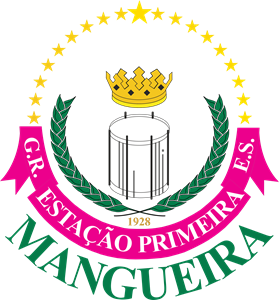
Grêmio Recreativo Escola de Samba Estação Primeira de Mangueira, or simply Mangueira, is a samba school in Rio de Janeiro, Brazil. The school was founded on April 28, 1928, by Carlos Cachaça, Cartola, Zé Espinguela, among others. It is located at the Mangueira neighborhood, near the region of Maracanã.

Engenho Novo is a neighborhood of middle class and lower middle of the North Zone of Rio de Janeiro, Brazil.
The 1958 Rio de Janeiro train crash, occurred on May 8, 1958, in Mangueira, a suburb two miles west of Rio de Janeiro city centre in Brazil when two electric trains collided head on, killing 128 people and injuring more than 300. It is the most serious rail accident in the history of the city. As of 2023, it remains the Second-Deadliest rail accident in brazilian railway history, being surpassed by the Aracaju train crash.
Aldeia Campista was a neighborhood in Rio de Janeiro, Brazil, close to contemporary Vila Isabel, Tijuca, Maracanã and Andaraí.

São Cristóvão Station is a railway station in São Cristóvão, Rio de Janeiro which is serviced by the Rio de Janeiro Metro and SuperVia.
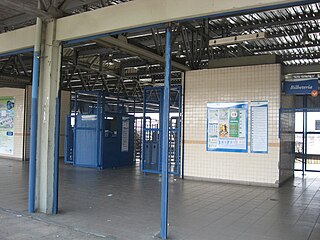
Deodoro Station is a railway station in the West Zone of Rio de Janeiro that serves as the terminal of the Deodoro Line. It is also on the Santa Cruz and Japeri lines.

Praça da Bandeira Station, previously known as Lauro Müller Station, is a railway station in Praça da Bandeira, Rio de Janeiro which is serviced by the Supervia.

São Francisco Xavier is a railway station in São Francisco Xavier, Rio de Janeiro which is serviced by the Supervia.

Riachuelo, originally known as Riachuelo do Rio, is a railway station in Riachuelo, Rio de Janeiro which is serviced by the Supervia.
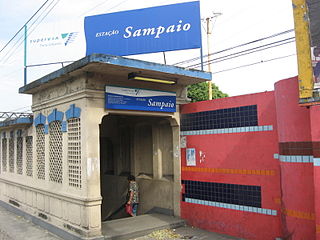
Sampaio is a railway station in Sampaio, Rio de Janeiro which is serviced by the Supervia.
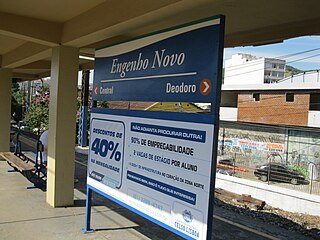
Engenho Novo is a railway station in Engenho Novo, Rio de Janeiro which is serviced by the Supervia.

Méier is a railway station in Méier, Rio de Janeiro which is serviced by the Supervia.
The Deodoro Line is a commuter rail line operated by SuperVia as part of the Rio de Janeiro Metropolitan Trains system. It runs from Deodoro, in the West Zone of Rio de Janeiro, through the North Zone to Central do Brasil Station, in Rio de Janeiro Downtown. The route and stations are shared with the Santa Cruz and Japeri Lines. It's the busiest line in the system. Since June 2020, it has been interconnected with the Santa Cruz Line.
Santa Cruz Line is a commuter rail line operated by SuperVia. It is a shortening of the old Mangaratiba Branch of Central do Brasil Railway, as this line continued towards the extinct Mangaratiba station, in the homonymous city, located in the coastal region of Costa Verde.
The Japeri Line is a commuter rail line operated by SuperVia.

